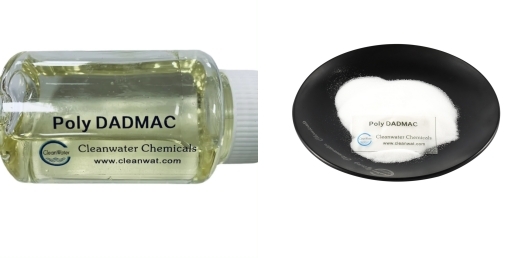With increasingly stringent environmental protection requirements and the increasing difficulty of industrial wastewater treatment, polydimethyldiallylammonium chloride (PDADMAC, chemical formula: [(C₈H₁₆NCl)ₙ]) (https://www.cleanwat.com/poly-dadmac/) is becoming a key product. Its efficient flocculation properties, applicability, and environmental friendliness have earned it widespread application in source water purification and wastewater treatment.

Product Introduction
The polymer contains strong cationic groups and active adsorbent groups. Through charge neutralization and adsorption bridging, it destabilizes and flocculates suspended particles and water-soluble substances containing negatively charged groups in water, demonstrating significant effectiveness in decolorization, sterilization, and organic matter removal. This product requires minimal dosage, produces large flocs, rapidly settles, and generates minimal residual turbidity, resulting in minimal sludge. It also operates within a wide pH range of 4-10. It is odorless, tasteless, and non-toxic, making it suitable for a wide range of source water purification and wastewater treatment applications.
Quality Specifications
|
Model |
CW-41 |
|
Appearance |
Light to pale yellow, transparent, viscous liquid. |
|
Solids content (%) |
≥40 |
|
Viscosity (mPa.s, 25°C) |
1000-400,000 |
|
pH (1% aqueous solution) |
3.0-8.0 |
|
Note: Products with different solids and viscosities can be customized upon request. |
|
Usage
When used alone, a dilute solution should be prepared. The typical concentration is 0.5%-5% (in terms of solids content).
When treating different source water and wastewater, the dosage should be determined based on the turbidity and concentration of the treated water. The final dosage can be determined through pilot tests.
The addition site and stirring speed should be carefully selected to ensure uniform mixing with the material while avoiding floc breakage.
Continuous addition is preferred.
Applications
For flotation, it can significantly improve production efficiency and reduce effluent solids content. For filtration, it can improve filtered water quality and enhance filter efficiency.
For concentration, it can improve concentration efficiency and accelerate sedimentation rates. Used for water clarification, effectively reducing the SS value and turbidity of treated water and improving the quality of effluent
Post time: Sep-24-2025

